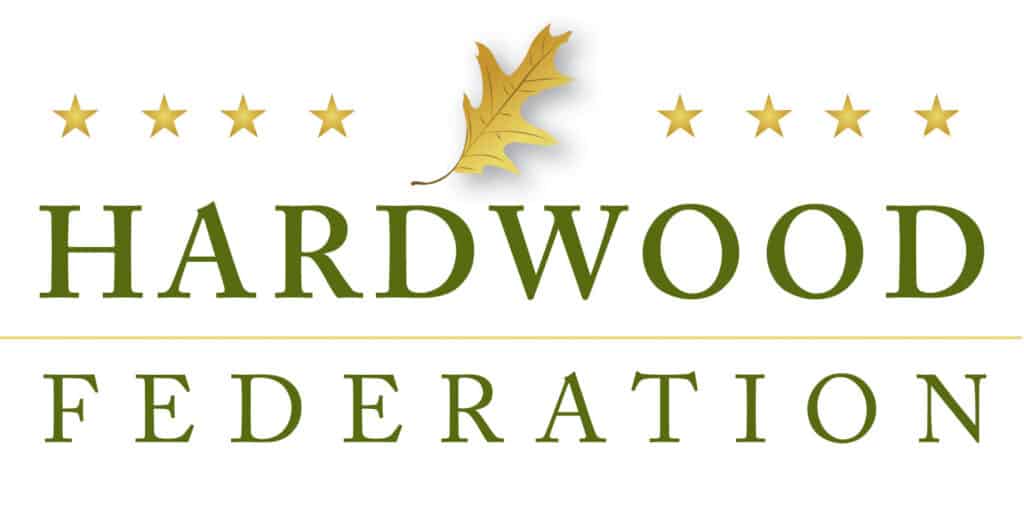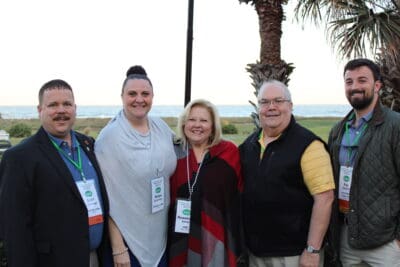
It seems like Congress drafted and passed a comprehensive Farm Bill just yesterday, but the old saying that time flies is a true one. The latest Farm Bill iteration was enacted in 2018 and we are about to enter another reauthorization round with Congressional hearings likely to commence early this year. Recall two things about the Farm Bill. One, Congress must enact a new one every five years and two, while it’s predominantly focused on row crop agriculture and other farm and nutrition programs, there are a number of programs of vital importance to forestry and forest products generally, and the Hardwood industry specifically.
One of the Hardwood Federation’s primary areas of focus in the context of the five-year Farm Bill is the trade title, which includes provisions authorizing and funding our two key trade promotion platforms—the Market Access (MAP) and Foreign Market Development (FMD) programs. These two highly effective platforms have a proven track record of opening up and sustaining markets across the globe for U.S. produced Hardwood products. One positive outcome from the 2018 Farm Bill rewrite was that MAP and FMD were consolidated for purposes of funding under a new umbrella program known as the Agricultural Trade Promotion and Facilitation Program (ATPFP). This was significant as the consolidation also provided for mandatory funding of $255 million over the life of the current Farm Bill to be apportioned among the programs under ATPFP. Before 2018, the Hardwood Federation and our allies that support these trade promotion programs were forced to work the Congressional appropriations process each year to advocate for MAP and FMD funding. And each year there were a select few Members of Congress looking to defund these programs or eliminate them entirely. Now that they are seeded with mandatory money and consolidated under this larger umbrella program, these funding concerns are generally not an issue.
Through MAP, the U.S. Department of Agriculture (USDA) partners with U.S. agricultural trade groups and state agencies to share costs of overseas marketing and promotional activities for a range of U.S. agricultural products, including Hardwood forest products. MAP currently receives minimum annual mandatory funding of $200 million for fiscal years 2019 through 2023. Under the FMD Cooperator Program, USDA’s Foreign Agricultural Service partners with U.S. nonprofit agricultural trade associations to address long-term opportunities to reduce foreign import constraints or expand export growth opportunities for U.S. agricultural commodities including Hardwoods. FMD also receives mandatory annual funding allocations for FY 2019 through FY 2023 at $34.5 million. The Hardwood Federation will be looking to preserve these mandatory funding levels at a minimum in the next Farm Bill round.
Outside of trade, the Farm Bill typically includes a robust forestry title which seeks to help private landowners maintain their working forest landscapes and includes measures to enhance forest health on federal forest landholdings. Providing additional tools for the Forest Service to better manage our federal forests will be an area of focus for the Hardwood Federation in the upcoming Farm Bill. Each year the fire season in Western states is increasingly severe and has resulted in bipartisan support in Congress for more active management of federal timber stands. While not as widely covered in the media, insect infestation and disease on federal forests east of the Mississippi are also problematic and could be addressed with more aggressive Forest Service intervention.
On the domestic market development front, the 2018 Farm Bill included Hardwood Federation-supported language promoting use of wood in taller buildings—higher than six stories. The provisions were part of the Timber Innovation Act, which authorized and funded research and development of mass timber as well as wood innovation grants to fund projects that use cross laminated timber and other cutting edge wood building materials. We will be working with our forest products industry association allies on building off of these wins from the last Farm Bill round as the 2023 reauthorization process begins in earnest.
One other area that is typically addressed in the Farm Bill is wood energy. In 2018, provisions were enacted authorizing the Community Wood Energy and Wood Innovation Program. This initiative was authorized to receive $100 million over the life of the current Farm Bill to facilitate installations of heat and power systems that operate on sawmill residual-derived fuels. We supported this provision as a potential solution to our sector’s residuals issue, which was a challenging situation at the time.
So who will be holding the pen in writing the next Farm Bill? The narrow margins of control in both chambers makes that an impossible question to answer, but what we do know is that both the chairmen and ranking members on both the Senate and House Agriculture Committees are strong supporters of the Hardwood Federation. On the Senate side, Senator Debbie Stabenow (D-MI) is the current chair and will be leading the 2023 Farm Bill reauthorization in the upper chamber if Democrats maintain control of the Senate following next year’s election. If the Senate flips to Republican control, Senator John Boozman (R-AR) would become the chairman. The Senate Agriculture Committee has historically been a panel that demonstrated bipartisan cooperation and we anticipate that continuing to be the norm going forward with these two leaders. In the House, Rep. David Scott (D-GA-13) is the current chairman and Rep. Glenn “GT” Thompson (R-PA-15) is the ranking member. Again, we have a considerable presence in Rep. Scott’s district and a good working relationship with his team. As for GT, he has been a long time leader on our issues and a genuine friend to the Hardwood sector.
A final wild card in terms of Farm Bill reauthorization will be the status of President Biden’s Build Back Better legislative package (still to be finalized as of press time). There are significant forestry related provisions in the existing draft language, some of which could have significant impacts on public and private forestlands…and the Hardwood industry. We will be reporting further on the results of the current debate once details are finalized.
As always, we will be seeking input and guidance from our members in terms of policy priorities to pursue in this next Farm Bill as the process gets underway, as well as your advocacy help as we get closer to the bill being drafted.









